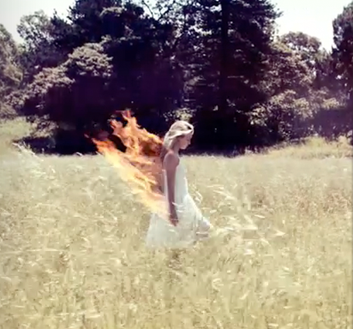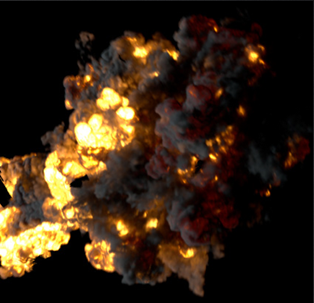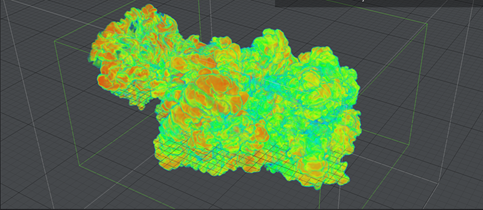
TurbulenceFD
EMITTERS
Emitters are to fluid simulation what brushes are to painting. If an object is set on fire, it emits heat and a flame. TurbulenceFD lets you use any geometric object or particle system to emit into fluid channels. This gives you the ultimate freedom for shape and animation of your emitters. Working with emitters in TurbulenceFD is like animating the brush strokes that paint the sources of fire, smoke, etc. The fluid simulation then takes your animated emission and creates a physically plausible flow from it.
COLLISION OBJECTS
Letting the fluid flow interact with solid objects is useful in many scenes. From a simple solid floor to vehicles moving through fire and smoke to animated characters on fire. Not only is it necessary to integrate the simulation into an environment, but it creates nice and natural turbulence in the wake of an object. Collision objects can stir up the fluid, wave it to the side or act as an obstacle. TurbulenceFD also supports collision objects with all kinds of complex animation including MDD imports and object controlled by rigid body dynamics.

SHADING CURVE EDITOR
The heart of voxel shading are the function curves (f-curves) that re-map values like temperature and density to intensity values used for opacity and color. TurbulenceFD features an f-curve editor that has been specifically designed for voxel based fluid shading. It allows for precise and intuitive control, making it very similar to the workflow of color correction, which many artists are already familiar with. And since the f-curves have to be evaluated billions of times during rendering, a special type of spline curve has been designed for TurbulenceFD that is particularly efficient for voxel rendering.
TURBULENCE MAPPING
Adding procedural noise to the fluid velocity field is a way to get curly flows that look more turbulent and more interesting. The controls work pretty much like a procedural noise shader that is commonly found in texturing tools. However, adding the turbulence uniformly across the whole volume will stir up the core of an explosion just as much as the parts further away from the violent reaction. This doesn't make much sense. So TurbulenceFD lets you to control where exactly you add curls to your flow using one of the fluid channels and a simple mapping curve. This way turbulence can be added only certain regions like the core of an explosion or the hot part of a flame for example.

VIEWPORT PREVIEW
The OpenGL based preview gives you a detailed look at each of the fluid channels in real-time. Several shading modes are supported in the preview. There's an analytic mode that provides a detailed look at the raw output of the simulation. And there are shaded modes that give you real-time feedback while tweaking the settings of each shader. In addition to the fully 3-dimensional preview modes, you can display a 2D slice of the voxel grid, oriented and positioned anywhere in the volume. This can be thought of as the magnifying glass of the preview modes and it's comparable to a wireframe view of geometric objects.
VOXEL GRID COMPRESSION
To help cope with the large simulation data, TurbulenceFD features lossless data compression that has specifically been designed for fluid data. It typically reduces voxel data down to about 60% in practice.
IGNITION CONTROL
Controlling how fire is ignited and how fast a flame propagates in TurbulenceFD is just as easy and flexible as painting fluids with emitters. It can be based on any fluid channel, not just temperature. This avoids the balancing act you have to perform if temperature also drives the buoyancy force that let's the hot gas rise.
UP-RES'ING
Often you work out the simulation at a low or medium resolution that allows for quick iterations. Then, you would want to simply re-simulate at a higher resolution to get the final result. But that may not only add high-res detail but also slightly change the large-scale motion due to the numerical nature of the simulation. Up-Res'ing is a way to keep the exact shape and motion of a low- or medium-res simulation and only add high-res detail to it. It's also faster than running a full simulation at the same high resolution.

SUB-GRID DETAIL
With Render Time Sub-Grid Detail TurbulenceFD pushes the Up-Res'ing approach even further. Instead of having to run a second pass on your base simulation, you just add the high-res detail to your result at render time. For extreme settings this is not as flexible as Up-Res'ing, but it doesn't require the additional simulation pass or additional cache memory either.

© Copyright 2000-2025 COGITO SOFTWARE CO.,LTD. All rights reserved. 京ICP备09015132号-52